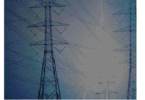Watching and driving the evolution
by Alex Apostolov, Editor-in-Chief

I started my career as a protection and control engineer exactly half a century ago and as a result I can claim that I’ve been involved one way or another in its evolution.
I started with a screwdriver, working with hard-wired electromechanical relays, drawing protection schemes by hand, calculating protection settings with a slide-rule and checking protection coordination with an electromechanical electric power system model. This was the existing technology, but to me it was not right – they were single-function, space-hungry, and only as accurate as springs, bearings, and plates allowed, Coordination lived within ±5–10% tolerances, and inertia set the speed limits. There was no adaptability and flexibility. That is why we were talking about the art of protective relaying. The only benefit was that to do it right we had to learn about selectivity, dependability and security – knowledge that is not only required at each stage, but that drives the evolution.
The first step-change that I witnessed was brought by solid-state relays. Comparators traded moving parts for precision and speed. Accuracy tightened to about the percent-level, response fell to milliseconds, and maintenance dropped. But dependence on auxiliary DC and sensitivity to EMI were challenging and made this era short lived.
Within this PAC era I have been following the emergence of microprocessor-based programmable logic controllers (PLC) used to automate various industries, but not ours. At the time I tried to use a PLC to implement the logic of a SIPS but was told “Over my dead body!” by the head of the protection department.
Luckily there were many other people in our industry looking for better PAC technology which brought us an evolutionary jump – microprocessor-based relays. Sampling, A/D conversion, and code unlocked multi-function protection, high-fidelity fault records, SOE logs, and serial links that hinted at substation automation to come. Reliability improved with self-monitoring, but complexity exploded: hundreds of settings, firmware lifecycles, and software failure modes that required configuration management and new training for every role from settings engineers to field techs. The work moved from devices to systems.
Multifunction IEDs made that system view practical. With 32-bit processors and higher sampling rates, a single IED could do distance, differential, reclosing, synchrocheck, synchrophasors, power quality, and breaker monitoring—while speaking DNP3, Modbus, and other protocols. This was not sustainable. There was no interoperability and integrating the products from different manufacturers in substation automation systems was very challenging and not economical. We needed something better that was suitable for PAC applications. And this is what pushed us to develop IEC 61850 – the cornerstone for the digital transformation of the industry.
The relay cubicle had become an integrated computer system on the grid edge and digital substations crystallized the next leap. Process bus with merging units moved A/D conversion to the yard; IEC 61850-9-2 sampled values and GOOSE replaced copper wires; precise time (PTP/GPS) aligned measurements and logic across the substation and between them. Copper disappeared, fiber took over, and with it came new responsibilities: network engineering, performance assurance under load, and cybersecurity as a first-class protection requirement.
Now we are at the beginning of a new era of centralizing and virtualizing with AI arriving as the way good tools always do: first as assistance, then as augmentation and who knows what in the future.
What have I learned carrying PAC from rotating disks to software-defined schemes? First, fundamentals endure—fault physics, selectivity, stability. Second, integration is now the job: information models, time, networks, and security are as central as pickup and slope. Third, progress is a negotiation: every gain in flexibility brings new duties in validation, lifecycle management, and resilience.
We are still pushing because the grid is still changing—IBRs, bi-directional flows, microgrids, electrification, and ever tighter performance envelopes. The next distance zone will run in a container; the next differential will work across bays and substations; the next breaker-failure trip will be justified by a model we can explain. But the requirements remain the same as the ones I learned at the beginning: trip when you must, ride through when you should, and always adapt, regardless of the evolutionary stage we are at.
“It is not the strongest of the species that survives, nor the most intelligent that survives. It is the one that is the most adaptable to change.”
Charles Darwin








